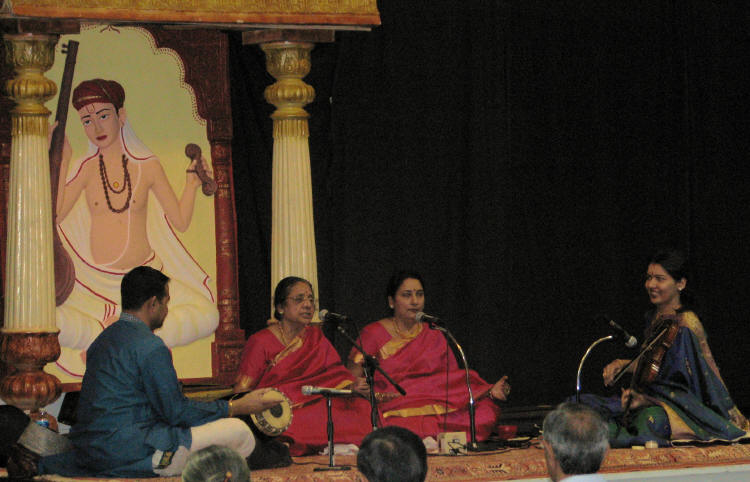

Balu Mahendra found Santhanam’s thin frame and beard photogenic and cast him in his film, ‘Sandhya Ragam’ (1989). His tongue in cheek humour and acidic folk speech made him a compelling speaker when he addressed political gatherings. We discover him to be a poor lad growing up with folk deities, grand Chola temples, and luxuriant agricultural lands and evolving to be an undying romantic. In the Gita Hudson documentary on his life and works, the multi-faceted artist recites love poems, shows ceiling paintings and displays his designs on sarees. His creations exhibit affinities to diverse veteran artists such as Dhanapal, M Senathipathi and Vidhyasankar Sthpathi but his closest would be Sooryamurthy, another prolific painter. When Santhanam did a series on the tree of life, it proved that his home-grown pictorial style could invite international attention. The multi layering of his paintings with shades, smudges, and involved drawings, indeed, enhanced the folkloric quality of his works. His contorted stylisations enhanced the mythologisation, made the past into a powerful presence, created tantalising dialogues with the lush green landscapes of Thanjavur, its folk arts and magnificent temples as backdrop. Santhanam worked on traditional themes such as Kamadhenu, parrots and mythological themes, bringing subtle changes to weave his interpretations. His paintings, however, remained highly stylised drawing heavily from the decorative perforated stylisations of shadow puppets, wood block prints, and stone sculptural reliefs. Like his compatriates of Kumbakonam Arts College, Santhanam attached importance to the excellence in portraiture and realistic drawings. His teacher and mentor, sculptor Dhanapal helped him financially and gave his creativity a direction during his early days, exposing him to the international arts and shaping his modern sensibilities.

Indeed Santhanam’s drawings made the basis for the Mullivaikal memorial monument in Thanjavur.īorn in Kumbakonam, Santhanam was fascinated by Dravidian architecture of the Uppiliappan temple characterised by Yali pillars and intricately carved decorative stone reliefs and it reflected in his works. Indiran points out that Santhanam’s espousal of the Sri Lankan Tamil cause and his relentless protests against environmental degradations earned him a unique place. One of the few proponents of nativism and Tamil aesthetics in contemporary arts and a strong voice for the rights of Sri Lankan Tamil fell silent with the death of artist Veera Santhanam on July 13.Īrt critic Indiran, who wrote the monograph, ‘Mukilin Meethu Neruppu’ (Fire on the Clouds) on Santhanam’s works mourned the 71-year-old death in a Facebook post saying the Tamil world of arts has lost a conscientious artist who was immensely aware of the social dimensions of art.


 0 kommentar(er)
0 kommentar(er)
